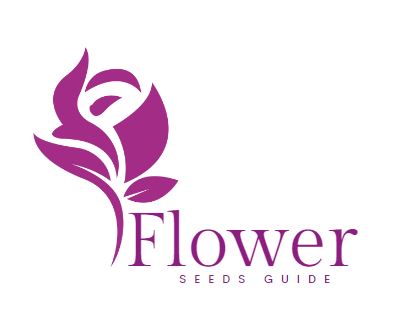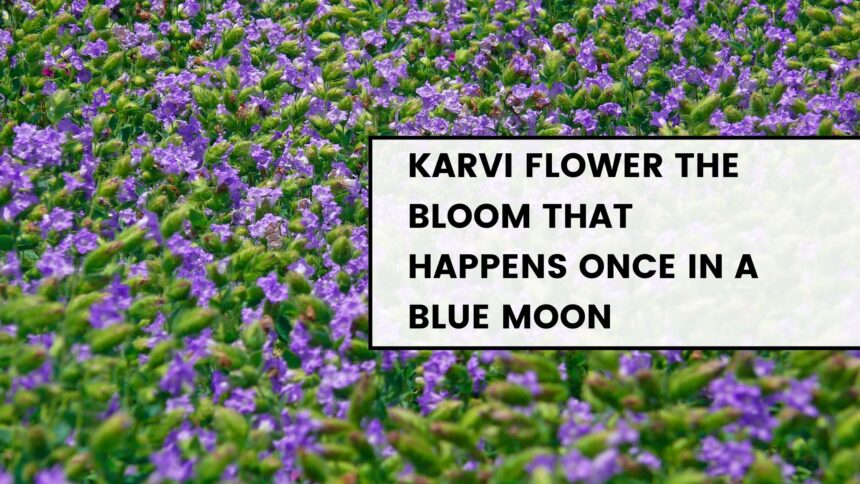The Karvi flower (scientifically known as Strobilanthes callosa) is a rare and fascinating bloom that captures the imagination of botanists, nature enthusiasts, and locals alike. This flower is native to the Western Ghats of India, especially in Maharashtra and Karnataka, and holds a unique place in the ecosystem. What’s most astonishing about this plant is that it blooms only once every seven to eight years, a botanical phenomenon that creates a mesmerizing spectacle when entire hillsides turn purple.
In this guide, we’ll explore everything you need to know about the Karvi flower, its significance, life cycle, ecological impact, and more.
What Is the Karvi Flower?
The Karvi flower belongs to the Acanthaceae family, and it’s sometimes referred to as the “Blue Bloom of the Western Ghats.” Unlike annual or perennial flowers, Karvi is a gregarious bloomer, meaning all the plants in a region flower synchronously, usually between August and October. After blooming, the plants die, only to regenerate through seeds for the next cycle.
This fascinating bloom symbolizes nature’s patience and endurance, with its delayed blooming schedule making it a highly anticipated event among locals and tourists.
The Life Cycle of the Karvi Plant
The Karvi plant follows a complex monocarpic life cycle—it flowers only once in its lifetime and dies afterward. Here’s how its cycle unfolds:
| Stage | Description |
|---|---|
| Germination | Seeds sprout in forest soils after rainfall. |
| Vegetative Growth | For the next 7-8 years, the plant grows leaves and branches, without flowering. |
| Flowering Phase | All plants in a region bloom synchronously, covering entire hills with purple blossoms. |
| Seed Production | After flowering, the plant produces seeds and dies, starting the cycle anew. |
This unusual life cycle ensures that predators or herbivores do not exhaust the seeds during non-blooming years, enhancing the plant’s chances of survival.
Where Can You See the Karvi Flower Bloom?
The Western Ghats, a UNESCO World Heritage Site, is the prime location to witness Karvi blooms. Some of the best spots to view this breathtaking phenomenon include:
- Kaas Plateau (Maharashtra): Known as the “Valley of Flowers,” Kaas transforms into a carpet of wildflowers, including Karvi.
- Sanjay Gandhi National Park (Mumbai): The Karvi flower bloom attracts many visitors and photographers here.
- Matheran Hill Station: This eco-sensitive region offers stunning views of Karvi flowers across the hills.
- Bhagwan Mahavir Wildlife Sanctuary (Goa): A lesser-known spot to enjoy Karvi blooms away from the crowds.
The Karvi flower also blooms in parts of Karnataka, such as Kudremukh and Coorg, adding to the region’s natural beauty.
Ecological Importance of the Karvi Flower
The Karvi plant plays a significant role in maintaining the balance of the Western Ghats’ ecosystem. Its bloom provides nectar to several pollinators, including bees, butterflies, and birds. When the flowers bloom synchronously, they create a food surplus, benefitting the local wildlife.
Additionally, the plant’s deep roots help prevent soil erosion on steep slopes during heavy monsoons. As it regenerates only through seeds, the flower contributes to the natural reforestation of degraded lands over time.
The Cultural Significance of Karvi Blooms
The Karvi flower is deeply intertwined with local traditions and folklore. In Maharashtra, the bloom is associated with hope, renewal, and patience, reflecting the belief that good things come to those who wait. Many communities organize festivals and nature walks to celebrate this rare spectacle, drawing attention to the importance of conserving the Western Ghats’ biodiversity.
Threats to the Karvi Flower
Despite its resilience, the Karvi flower faces several threats:
- Deforestation and habitat destruction for agriculture or infrastructure development.
- Tourism-related disturbances, such as littering and trampling of plants by visitors.
- Climate change, which affects rainfall patterns crucial for the plant’s growth and bloom cycle.
Efforts are underway to protect the Western Ghats, with local conservation programs focusing on preserving biodiversity and regulating tourism activities during bloom seasons.
FAQs About the Karvi Flower
Why does the Karvi flower bloom only once every 7-8 years?
The Karvi plant follows a monocarpic life cycle, meaning it flowers once in its lifetime to maximize seed production and reduce competition with other plants.
When is the best time to see Karvi flowers?
The bloom typically occurs between August and October, depending on the monsoon patterns of the year.
How long does the Karvi bloom last?
The bloom usually lasts for about 2-3 weeks, after which the flowers dry up, and the plants die.
Can I grow Karvi plants at home?
The Karvi plant is best suited to forested, hilly regions with specific climate conditions and deep soil, making it difficult to cultivate in home gardens.
How can I help protect Karvi flowers?
You can support conservation efforts by participating in eco-friendly tourism and spreading awareness about the need to protect biodiversity in the Western Ghats.
Conclusion: Witnessing a Natural Wonder
The Karvi flower is not just a rare botanical phenomenon but a symbol of patience, endurance, and nature’s intricate balance. Experiencing the bloom firsthand offers a deeper appreciation of the fragility and beauty of ecosystems like the Western Ghats.
As deforestation and climate change threaten biodiversity, it is essential to raise awareness and protect such marvels. Whether you’re a nature lover, photographer, or conservation enthusiast, witnessing the Karvi flower bloom is an unforgettable experience.
Plan your visit to the Western Ghats, enjoy the magic of the Karvi bloom, and contribute to its preservation!

